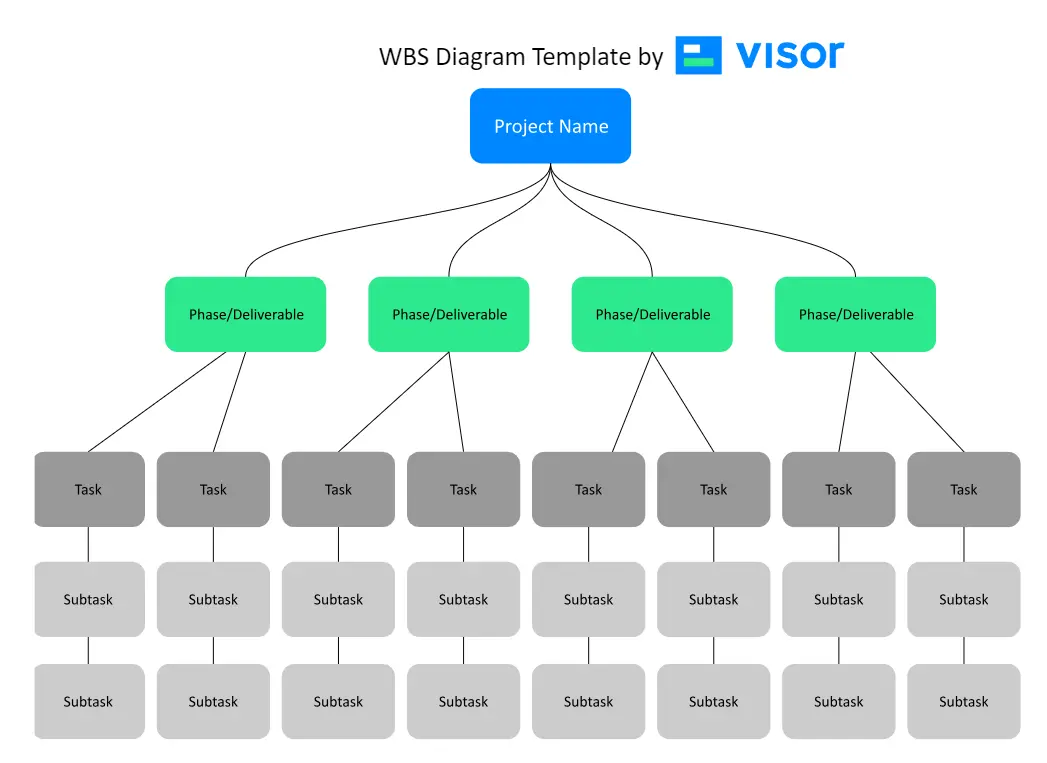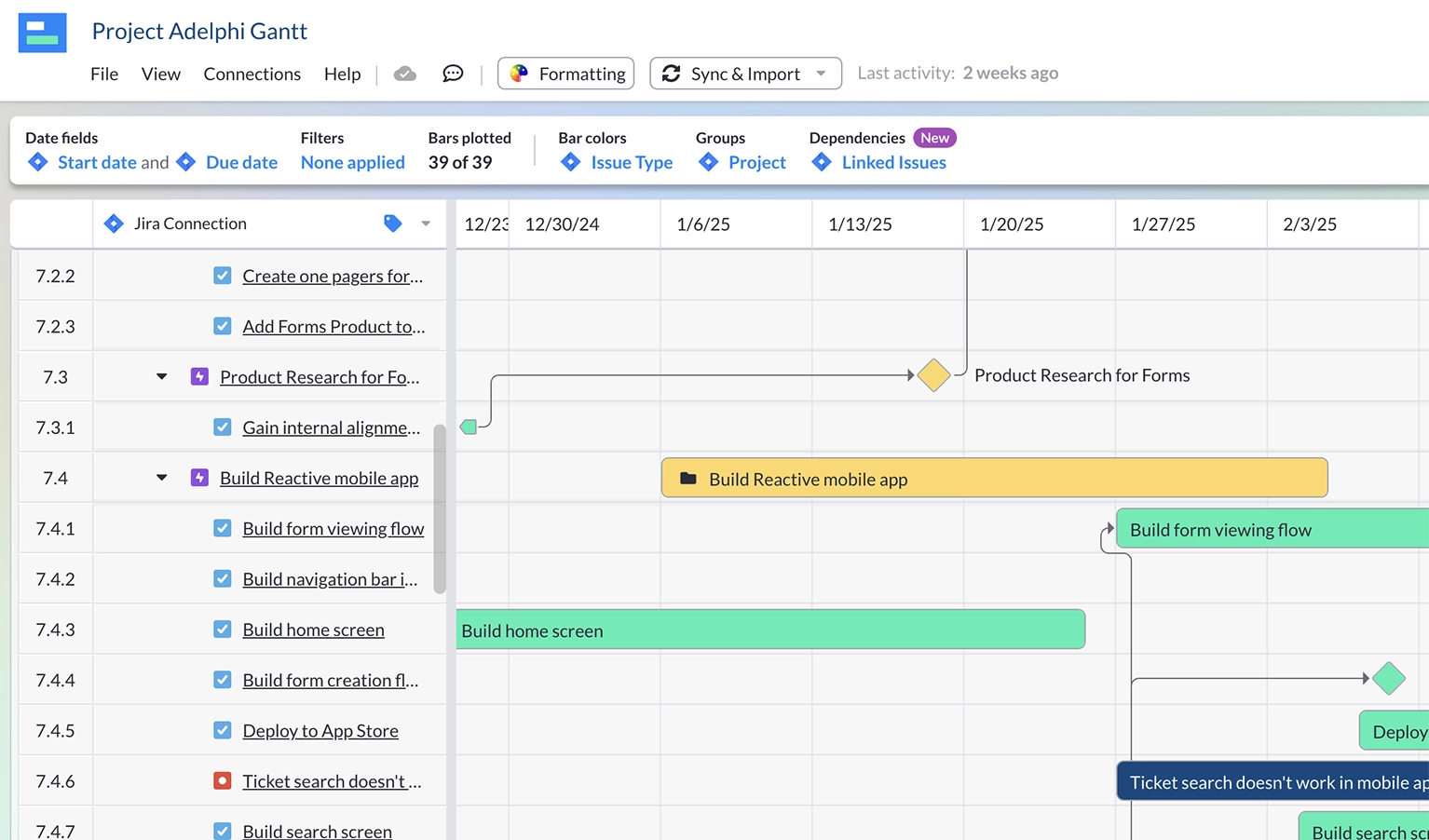
4 Free Project Scope Statement Templates to Save You Time
Project scope documents outline the basic elements of a project so that stakeholders have a clear understanding of what a project will achieve and how it’ll be executed. In short, it’s a way to make sure the team can manage expectations, plan resources, and mitigate risks.
In project management it’s essential to set limits about what the aims and boundaries of your project is, and to create clarity for your aims and methods to achieve them. However, if you’ve never put together a project scope statement before, it can be tricky to know where to start.
That’s where we come in. We’ve put together a set of templates to help you plan out your project scope statement, in addition to a guide showing you how to:
- Define the elements of a project scope statement
- Outline project scope statement best practices
- Use the free templates we’ve included in this post
One of the best ways to track your project scope is with Visor. Visor is designed to connect stakeholders with project data so everyone has up-to-date information. Try it for free today and keep all your stakeholders aligned.
Project Scope vs. Product Scope
Project scope and product scope both sound similar and are often confused, but they’re very different.
Product scope is all about defining the personality, functionality, and limitations of a product. It includes defining who the ideal user is, and how the product will deliver value to them.
The aim of a product scope is to ensure your product roadmap is governed by what is feasible and will deliver value to the customer. It helps you refine your roadmap and groom your backlog.
A product scope also helps with governance and control, but is typically created on a per-project basis. For example if you were designing a product you may have one product scope and multiple project scopes within that.
What is a project scope statement and why should you use it?
Project scope is the work that’s necessary to complete a project, including project boundaries, deliverables, and objectives. Often, project scope is tracked via a visualization, like a Gantt chart.
A project scope statement is a document that lays out the details of the project scope. It’s set up to make sure teams and stakeholders are all on the same page and all understand the boundaries of a project and what it will achieve.
It’s a document designed to guide all decisions in a project and can help your team avoid issues like scope creep (when you end up working on tasks outside of the original scope of your project).
The project scope statement isn’t just a record of your project plan. It can be used throughout the life of the project to ensure clarity, alignment, and control, including:
- When the project is starting, to define the project and secure approval
- During the project, to measure performance and progress
- After completion, to judge whether all deliverables are in and help reflect on the successes and lessons learned from the project
So now that you know what a project scope statement is, let’s get into what you actually include in that statement.
What are the elements of a project scope statement?
When it comes to project scope statements, you’re looking for the basics: deliverables, constraints, stakeholders, etc. It’s a blueprint for your project, laying out the elements you need to get the project done. That typically includes:
- Project Objectives
- Project Deliverables
- Project Requirements
- Project Constraints
- Project Assumptions
- Project Exclusions
- Acceptance Critieria
- Project Milestones
- Stakeholder List
- Project Approval
Here are those key elements of a project scope statement described in more detail:
- Project Objectives: Use SMART objectives here – in other words, goals that are Specific, Measurable, Achievable, Relevant, and Time-bound (more on that under best practices). In addition, look for objectives that align with the overall strategic goals of the organization.
- Project Deliverables: These are the specific outcomes or products that the project will produce.To put it another way, this section details what will be delivered to the client or stakeholder upon project completion.
- Project Requirements: Offer detailed descriptions of the features and functions of the deliverables. This section often includes technical specifications and quality criteria that the deliverables must meet.
- Project Constraints: This is simply any limitations or restrictions that affect the project, such as budget, time, resources, and technology.
- Project Assumptions: This section includes statements about conditions that are believed to be true for planning purposes. For instance, you could have a project assumption for your tech stack that says selected software tools and systems will perform as expected and will not require major upgrades during the project. A construction project could assume weather conditions. Assumptions should be validated as the project progresses to avoid surprises.
- Project Exclusions: If there are specific items or tasks that are not part of the project scope, include that here. This further clarifies the boundaries and helps manage stakeholder expectations.
- Acceptance Criteria: This section explains what conditions have to be met for the project deliverables to be accepted by the stakeholders. This ensures that the deliverables are fit for purpose.
- Project Milestones: A milestone is a key point in the project timeline that signifies major progress or an achievement. Milestones help track progress and ensure the project stays on schedule. (You can also add milestones to your Gantt charts, if you want to add visualizations to your project scope statement.)
- Stakeholder List: Identify the key stakeholders involved in the project, along with their roles and responsibilities to ensure it’s clear who’s doing what.
- Project Approval: It’s important to include a sign-off section where stakeholders formally approve the project scope statement. This indicates agreement and commitment to the project scope as defined.
Together, these elements ensure that the project scope statement gives you a comprehensive and clear guide for what the project will deliver and how that will be accomplished. Overall, it helps you to align all stakeholders and set the stage for successful project execution.
Project Scope Statement Best Practices
There are a few ways to ensure you end up with a document that’ll help guide your team towards developing a successful project – best practices that include the following:
Set SMART Objectives
The SMART acronym stands for Specific, Measurable, Achievable, Relevant, and Time-bound. It’s a good way to set goals, since it makes sure that objectives are clear and reachable. Here’s a breakdown of what each part of the acronym means:
- Strategic: Objectives should be clear and specific to provide a clear direction.
- Measurable: You should have quantifiable ways to measure progress and success.
- Achievable: Don’t bite off more than you can chew by setting realistic and attainable objectives. This is key in avoiding scope creep or not overwhelming your team.
- Relevant: Though it seems obvious, your project objectives should matter to you. That means no projects that won’t align with or advance relevant team goals.
- Time-bound: Goals should have a clear timeline, including a start date and a target end date.
In case you want a bit more practice writing SMART objectives, check out this guide from the University of California. Though it’s a little extra work, mastering the SMART format will go a long way to giving you targeted objectives that are easy to follow.
Keep it simple
A simple, clear document makes your project scope statement easier to read, resulting in better communication all around. A concise document is also more likely to be read and acknowledged by stakeholders, ensuring you get better engagement and feedback. Beyond that, simple statements make it easier for project managers to keep track of the scope of the project without wading through additional material.
So how do you keep your project scope statement easy to read? Use jargon-free language, and include only mission-critical details. Don’t get bogged down in tangents or additional material.
Connect with stakeholders
Complicated projects involve a lot of pieces, and an outside perspective can sometimes spot something you’d miss. So bring in key stakeholders from the beginning of a project to gather their input, understand their expectations, and get stakeholder buy-in. Then maintain open lines of communication with stakeholders throughout the project to keep them informed and engaged.
Be ready for change
Scope creep is very real – and it’s important to review your project scope statement periodically to ensure you’re still on target. At the same time, if priorities change, you should be ready to adjust your scope to encompass those changes. A project scope statement is a living document, and you can and should switch things up if the project itself is changing.
How to Use a Project Scope Statement Template
When filling out the templates below, think about the high-level material we mentioned above, but also remember the following:
- Be tactical: You want a streamlined, easy-to-read document. Only add what you need to understand the scope of the project. Details can come later.
- Be flexible: It’s just a template – you can change, add or delete elements to fit your organization and your specific project.
- Watch out for cut and paste: Make sure you’re not transferring data from the template or a previous project scope statement.
Project Scope Templates
Let’s get into the project scope templates. We’ve put together a series of project scope statement templates, as well as a Work Breakdown Structure (WBS) tree. Remember these are templates – you can adapt and edit them however you like to fit the needs of your team and your organization.
Basic Project Scope Statement Template
If you want a template with all the basic elements of a project scope statement, this is the right choice for you. There’s space for deliverables, constraints, assumptions, and so on, as well as a page for approvals.
You can adjust as needed. For instance, you could add a WBS tree to the document in lieu of or in addition to the deliverables section or remove a section that doesn’t apply to your project.
WBS Tree Template
A Work Breakdown Structure (WBS) tree is a way of visually breaking down a project into smaller, more manageable components. This helps in understanding the scope of the project, planning, and assigning responsibilities.
You can use this chart as a supplement to or substitute for your list of deliverables in your project scope statement.

Contractor Project Scope Statement Template
If you need to provide a project scope statement to a client, this template is for you. It’s designed to include relevant information about the client and share contact information for team members. In addition, there’s a section for a Fee Schedule, allowing you to include estimates for costs, so there are no surprises for you or the client down the line.
Software Project Scope Statement Template
This template is similar to the Basic Project Scope Statement, but includes language related directly to the lifecycle of a software development project, including space for different phases of software development and sections for technical, functional, and non-functional requirement types.
Keeping Your Scope in Check
A well-crafted project scope statement is a key component of successful project planning and execution. By clearly defining the project’s objectives, deliverables, boundaries, and constraints, you can set a solid foundation that guides your team and stakeholders towards a shared vision of success.
But the templates above are just a jumping off point. Once you get your project started, you need a way to review progress to ensure the project stays in scope. You can keep all stakeholders in the loop using Visor, which offers customizable visualizations that allow you to give stakeholders the info they need to see if your project is on track. Sign up for a free account today to find out how Visor can help you add clarity to your project planning.
Visor also offers tons agile templates for sprint planning and agile roadmaps. In addition, you can find more basic templates for things like a simple Gantt chart.






